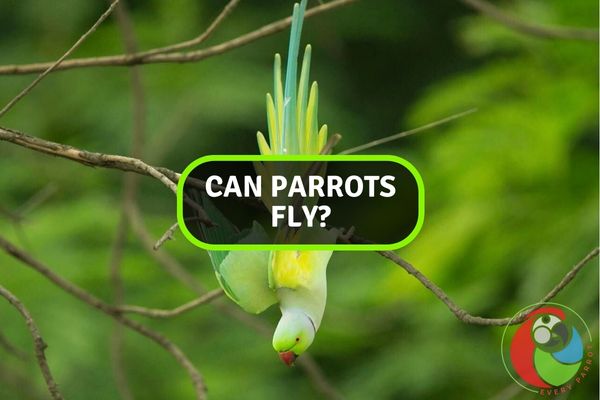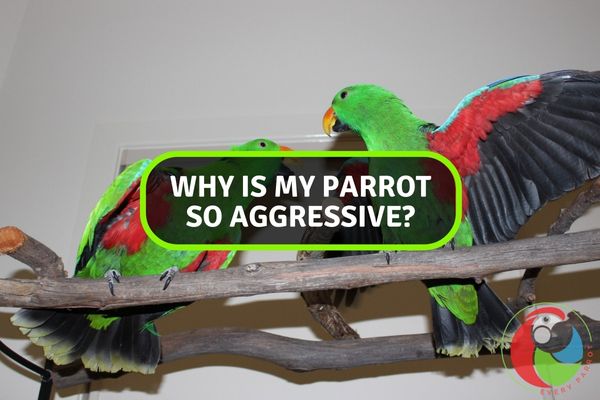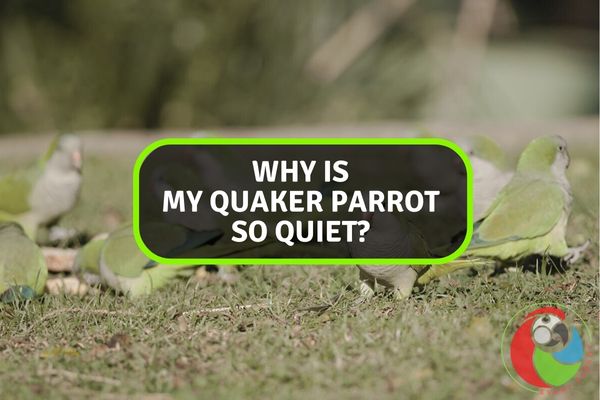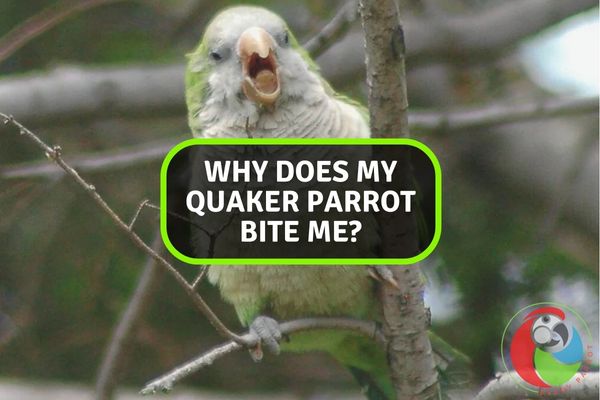Why is My Quaker Parrot Squawking?
Welcome to the lively world of Quaker Parrots, where vibrant plumage and charming personalities often come with a side of enthusiastic squawking. If you find yourself pondering the reasons behind your feathered friend’s vocal outbursts, you’re not alone. These spirited birds, native to South America, communicate through squawks, chirps, and squabbles, expressing everything from joy to irritation.
Understanding the motives behind your Quaker Parrot’s squawking can strengthen the bond between you and your avian companion.
In this exploration, we’ll delve into the diverse reasons why these charismatic birds may become particularly vocal, decoding the messages behind the squawks and providing insights into creating a harmonious environment for both you and your spirited Quaker Parrot.
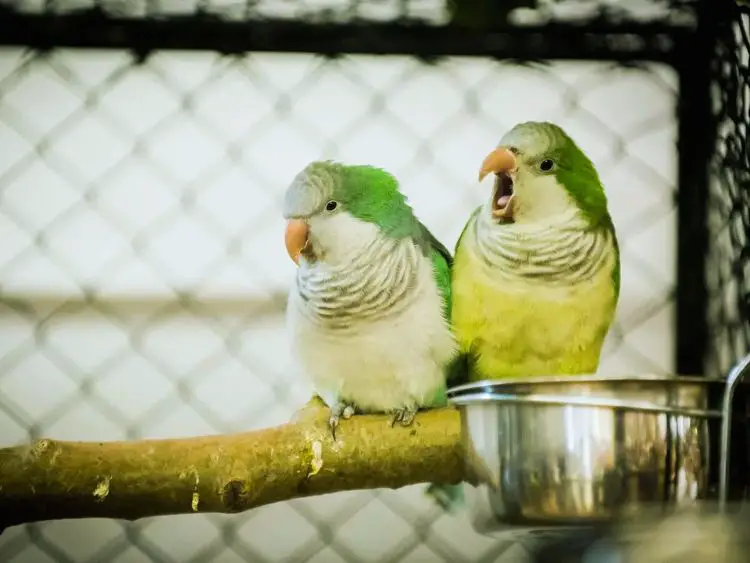
General Characteristics and Behavior
Quaker parrots are small-to-medium sized parrots native to South America. They are highly social and form close bonds with their owners. Quakers thrive on interaction and mental stimulation. Without proper care, they can develop behavioral problems like excessive screaming or squawking.
Communication Methods of Quaker Parrots
Vocalizations are a key communication method for Quaker parrots. They use various squawks, screams, and chirps to express their needs, call to their flock, show excitement or alarm, and more. Some noise is perfectly normal and healthy. However, loud, constant squawking can indicate an issue.
Normal Vocalizations vs. Excessive Squawking
Quaker parrots may chirp, chatter, or make other noises periodically throughout the day. Short squawking sessions when a new person enters the room, during playtime, or when receiving food are typical. Excessive, loud, constant squawking that continues for long periods is abnormal and suggests an underlying problem.
Common Reasons for Squawking
There are several common reasons Quaker parrots squawk excessively:
Environmental Factors
1. Cage Placement and Size
If a Quaker’s cage is too small, dirty, or placed in a high-traffic area, it can cause stress that leads to loud squawking. Ensuring the cage is appropriately sized, clean, and in a peaceful spot can help.
2. Lighting and Temperature Considerations
Insufficient lighting, lack of UVB exposure, or temperature extremes may also trigger excessive vocalizations. Keeping lighting and temps within proper ranges reduces stress.
Social Needs
1. Loneliness and Boredom
Quakers are highly social and need interaction to thrive. Without adequate quality time with owners, they may scream for attention. Spending time playing, training, and bonding with a Quaker helps satisfy its social requirements.
2. Lack of Mental Stimulation
Quakers are intelligent and require mental stimulation. A lack of toys, activities, and environmental enrichment can cause boredom-induced screaming. Rotating new toys, offering foraging activities, learning tricks, and introducing puzzle feeders can prevent this.

Health-Related Issues
1. Illness and Discomfort
Underlying health problems like infections, injuries, or arthritis can be painful or uncomfortable and prompt excessive vocalizations. Having a vet examine a constantly squawking bird is important.
2. Nutritional Deficiencies
Poor nutrition can also contribute to non-stop squawking. Ensuring a Quaker’s diet is balanced and includes key nutrients helps minimize this trigger.
Solutions for Preventing Excessive Squawking
There are several effective solutions for curbing a Quaker parrot’s excessive squawking:
- Spend ample interactive time with the parrot daily.
- Ensure the bird gets 10-12 hours of darkness/sleep per night.
- Provide a variety of toys rotated out weekly.
- Teach new tricks like waving or spinning.
- Offer foraging opportunities by hiding treats in toys.
- Place the cage away from noisy, high-traffic areas.
- Take the parrot to an avian vet for a check-up.
- Maintain proper nutrition and a balanced diet.
- Avoid inadvertently rewarding screaming by ignoring it.
- Use positive reinforcement training to reward quiet behavior.
Behavioral Issues Leading to Squawking
Behavioral issues, such as frustration, boredom, or attention-seeking, can trigger squawking in birds. This vocalization often serves as a communication method for expressing discomfort or seeking engagement from their environment.
Positive Reinforcement Strategies
Quaker parrots are highly social and may squawk persistently to get their owner’s attention. It’s important not to inadvertently reward this by giving them attention when they scream. Instead, ignore screaming and reward with praise and affection when they are quiet. This positive reinforcement helps curb attention-seeking vocalizations.
Tips for Creating a Comfortable and Secure Environment
Quakers can be territorial and may excessively guard or scream over their space. Placing the cage against a wall instead of in the open, partially covering it at night, and providing safe hiding spots helps a bird feel more secure and less likely to excessively vocalize.
Training and Enrichment Techniques
Owners can curb Quaker parrot squawking by implementing positive reinforcement training, teaching commands, and providing mental stimulation through toys and activities. Enrichment techniques not only address boredom but also foster a healthier, more contented avian companion.
Positive Reinforcement Training Methods
1. Interactive Playtime
Spending quality interactive time with a Quaker through play and training is key. Use toys, play gyms, or household items for fun activities that satisfy their need for mental stimulation.
2. Teaching New Tricks
Positive reinforcement training teaches Quakers new behaviors and tricks, which provides mental exercise. Use treats and praise to reward desired actions like spinning, dancing, or retrieving items.
Enrichment Activities to Stimulate Mental Health
1. Puzzle Toys and Foraging Opportunities
Hiding treats in cardboard tubes, boxes, crinkle paper, and toys encourages natural foraging behavior. Start simple and increase difficulty over time. This stimulates their mind.
2. Rotating Toys and Introducing New Elements
Quakers bore easily. Rotating toys weekly and introducing new items, perches, boxes, and more makes their environment more interesting and minimizes boredom-induced screaming.
Conclusion
The incessant squawking of a Quaker Parrot serves as a multifaceted communication tool. Whether expressing joy, seeking attention, or alerting to potential threats, these vibrant birds vocalize to convey their emotions and needs.
Understanding the context, environment, and individual personality of the parrot is crucial in deciphering its squawks. Addressing underlying factors such as boredom, loneliness, or inadequate stimulation can contribute to a quieter and happier avian companion.
By fostering a nurturing environment and engaging with the Quaker Parrot, owners can forge a harmonious relationship and minimize disruptive squawking behavior.


